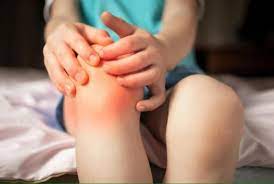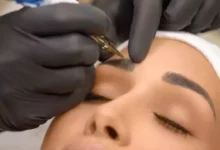Juvenile Arthritis: What Is It? Five Indicators Of Joint Pain And Swelling In Children During the Winter
When left untreated, juvenile arthritis may lead to a host of problems in children, such as chronic discomfort, impaired mobility, aberrant development patterns, and ultimately joint destruction. According to Dr. Chandrika Bhat, a pediatric rheumatologist consultant at Rainbow Children’s Hospital in Marathahalli, Bengaluru, juvenile arthritis is an autoimmune illness that affects around 1 in 1000 children in India under the age of sixteen. Psoriatic arthritis, systemic arthritis, enthesitis-related arthritis, polyarthritis, and oligoarthritis are the several subtypes of juvenile arthritis. Related to Enthesitis The attachment sites of tendons and ligaments are the main targets of arthritis. Psoriatic arthritis is characterized by skin lesions and inflammation of the joints, while systemic arthritis also includes fever and/or a rash that resembles hives on the skin.
Early Symptoms and Signs of Juvenile Arthritis
Juvenile arthritis patients in children have persistent discomfort, especially in their joints. The discomfort may then be linked to increased temperature or edema surrounding the joint. According to Dr. Chandrika Bhat, “early intervention through early detection of joint inflammation is the primary key to combatting an ailment of this degree.” Limitations in joint movement are likely to be noticed by a kid with the condition as well, particularly during periods of rest (long or brief). Joint stiffness in children under three years old may make them look more clinging after periods of relaxation.
In addition to the joints, eyes may also be impacted in some youngsters, however this usually has no symptoms. But if eye irritation is not identified, it may eventually result in blindness. Hence, for kids with certain kinds of juvenile arthritis, physicians often recommend an ocular examination every three months. Rarely, the liver, various blood components, and the heart may all be impacted by the inflammation linked to systemic arthritis.
How Can Juvenile Arthritis Be Combated?
Daily Inspections: Scheduling regular meetings with a pediatric rheumatologist is essential for efficiently developing, carrying out, and overseeing treatment programs that are required. A rheumatologist may assign your kid to see an ophthalmologist, physiotherapist, or occupational therapist based on the subtype of arthritis.
Healthy Diet: To support bone health and general vigor, one must adhere to a balanced diet full of essential nutrients and minerals. For children to enable improvements in muscular strength and joint flexibility, they must also be encouraged to engage in frequent, mild physical activity.
A supportive environment is essential for children suffering from this kind of illness, as we as adults must be there to assist them and guide them through the difficulties that come with it. In addition, educating peers, instructors, and friends about juvenile arthritis promotes comprehension and builds a supportive atmosphere in both social and academic contexts.







